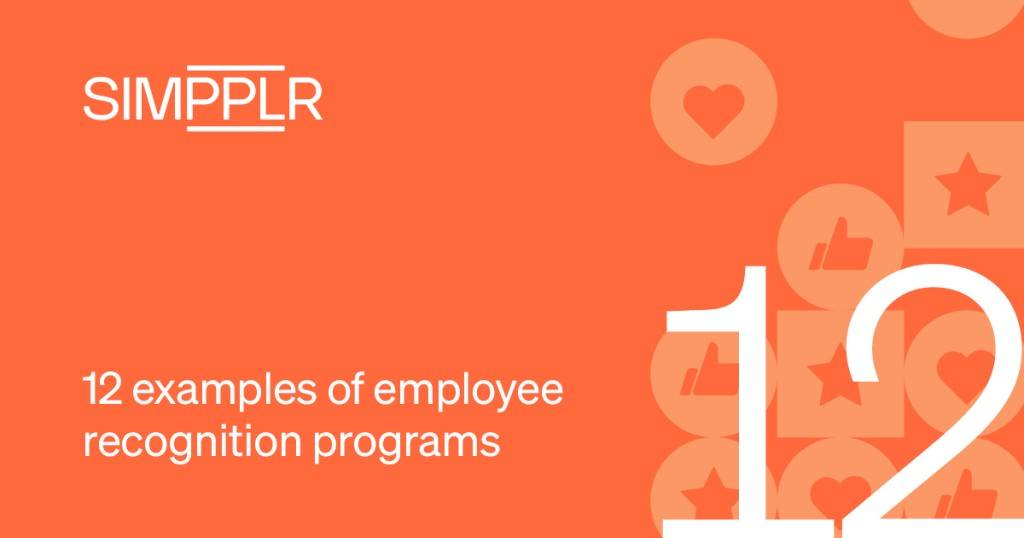Employee relations explained
Employee relations are the creation and maintenance of positive relationships across all levels of a company, professionally and interpersonally. When working optimally, employee relations professionals keep track of all emotional, physical, practical, and contractual employee considerations and act as an advocate for each in strategic planning discussions. Strong employee relations result in a better employee experience and higher productivity. This function is normally managed by an HR department and depends on consistent, clear, and continuous communications.
- 1 Importance of employee relations
- 2 Indications of poor employee relations
- 3 Objectives of healthy employee relations
- 4 Examples of employee relations
- 5 How to build a good employee relations strategy?
- 6 Best practices of employee relations
- 7 How to improve employee relations
- 8 How does HR teams help in employee relations
- 9 What does an employee relations policy cover?
- 10 Conclusion

Importance of employee relations
Without employees, a company cannot function. Thus good relations, resulting in a positive employee experience, are paramount to long-term success. It’s worth noting that if a company respects its employees as contributors and stakeholders this leads to positive attitudes between management and employees.
With strong employee relations in place, better engagement is enabled, leading to higher employee satisfaction and increased productivity. This, in turn, supports higher employee retention rates and increased employee advocacy and empowerment. In addition, good relationships enable employees to feel valued and respected, and this promotes their sense of belonging.
Good employee relations also increase loyalty, confidence, and trust. They heighten motivation and promote a healthy company culture and work-life balance while lowering the chances of workplace conflicts.
Given that good relationships are fostered through effective communication, valuable feedback gained through communication can benefit everyone in the organization.
Indications of poor employee relations
Here are some examples of what can go wrong. A strong employee relations initiative must cover the following physical, emotional, contractual or practical issues, along with any others that might arise:
- Conflicts or disputes with co-workers
- Regular absenteeism
- Inappropriate use of the company’s internet
- Lack of respect for coworkers
- Poor punctuality
- Excess gossip
- Personal hygiene issues
- Evidence of substance abuse
- Disregard for safety rules
- Lack of communication with management
- Inadequate problem-solving skills
- Out of reach when working remotely
- Messy or untidy
- Use of inappropriate language

Objectives of healthy employee relations
Issues concerning employees and their relationships across an organization are many and varied, and the above list shows us some of the things that can go wrong when an employee relations strategy is overlooked. To avoid or prevent these, what objectives should an effective employee relations initiative include?
- Avoid, prevent, or manage workplace disputes and conflicts that can lead to low morale.
- Manage workplace bullying which can develop from conflict and cause decreased employee performance, absenteeism, a bad company reputation, and even legal action.
- Pay attention to workplace safety because this affects productivity, and the employer can be held responsible for any accidents.
- Track hours worked correctly as conflict can arise when companies suspect dishonesty or employees feel the incorrect hours have been recorded.
- Without fail, review pay rise requests seriously, and if there is no leeway for increased salary, consider other improvements or perks.
- Encourage employee engagement through career opportunities and employee development, incentives, recognition and reward, and the promotion of a good work-life balance, because this increases productivity.
- Create and maintain good workplace communication because conflicts and disputes can arise through a lack of effective communication.
- Ensure company policy is clearly communicated to avoid misunderstandings that could lead to disputes.
- Handle any accusations and manage consequent actions.
- Elect a company representative to liaise with the relevant company union as the main contact point regarding wage negotiations and employee rights.
- Monitor overall morale and its effect on performance by accepting feedback, including from anonymous sources.
Examples of employee relations
It’s commonly understood that employee relations cover a wide variety of issues around ‘anything to do with employees’. This includes the management of employee expectations, the resolution of conflict, balancing employee aspirations and company goals, maintaining employee trust and confidence, and others. Let’s take a closer look at some of these challenges.
Managing conflict and disputes
Conflict happens in any work environment and can occur frequently. Effective measures to handle conflict are critical to the long-term health of your organization.
It’s important that the two groups or individuals in conflict have the opportunity and place to communicate. If they can’t talk and have their issues heard, nothing improves. This can lead to low morale and high rates of employee turnover.
Related: Lack of communication in the workplace: causes and effects
Developing and maintaining a policy of effective communication between employees is a great way to reduce or avoid conflict. The majority of confusion and misunderstandings are eliminated, and employees are enabled to feel heard.
Monitoring wages for hours worked
Payday often gives rise to disputes. Sometimes employees feel they have worked more hours than are reflected on their payment schedules. Other times, management feels claims on overtime pay are inaccurate. This puts a big load on the HR department, having to constantly review time sheets and attendance records to see what’s what, and causes dissatisfaction throughout the company.
An intranet system, with HR tools baked in, tailored to your company’s employee experience requirements, can alleviate this situation by providing a self-service space where employees can regularly manage and monitor inputs and outputs. Time-keeping software can be included to efficiently manage personal schedules.
Laura Klieves VP Head of PeopleOnboarding this intranet was the simplest software implementation I’ve ever gone through, and I’ve done a lot—from new websites, new learning management systems, other intranets, and all kinds of things. This was easy. Why Simpplr? Because it’s beautifully simple.
Monitoring attendance and timekeeping
Logging in and out manually isn’t super-accurate, and issues around attendance and timekeeping are therefore common. A self-service area on the company intranet is more efficient and allows employees to track work hours and communicate with HR and others if issues arise. This avoids and can prevent conflict and disputes over attendance.
Maintaining health and safety
Nobody wants illness or injury, and if these recur in your workspace, you can have a big problem. The health and safety of all must be a top priority in every company. Effective security measures must be in place, along with safety procedures and equipment.
To maintain a good record, employees mustn’t be fatigued or exposed to unsafe or unhealthy situations. A well designed intranet designed to your company’s employee experience needs can track workplace activity to assist HR in balancing schedules and allocating enough rest time and time off to ensure a healthy, safe environment.
Handling leave and time-off disputes
Employees need to know what the company’s leave policy is, and it is imperative that this policy complies with state and federal laws. Leave management software can ensure that an updated, easily accessible, fully compliant leave policy is always available to employees, and this can greatly reduce disputes around leave or time off. Leave requests and adjustments can also be managed between employees and HR on this system.
How to build a good employee relations strategy?
A strong employee relations strategy will help employees with the acknowledgment and appreciation they require, and help companies achieve the performance and productivity they need.
- Encourage a collaborative and cooperative workplace culture. Promote strong company ethics and values, so employees feel good about their work and workplace, and be sure to lead by example.
- Ensure timely, straightforward, relevant communications, so everyone knows what’s going on. This way, nobody feels left out, and misunderstandings and mix-ups can be avoided. Regular, informal, positive team meetings will encourage collaboration. Be sure not to micromanage because this will decrease trust. Always encourage feedback and communicate updates, developments, or changes.
- Recognize and reward a job well done. Exceptional results or going the extra mile to achieve company goals or uphold values deserve to be recognized and will foster an enhanced employee experience. Approach any accolades with equality in mind and on all accounts avoid favorites.
- Create a policy to reduce conflicts because the build-up to a conflict, the conflict itself, and the aftermath can take up an inordinate amount of valuable time, and affect the productivity of the parties involved and those around them. When a conflict or dispute arises, don’t let things fester. Be proactive and act swiftly to address issues and reach a resolution. This will keep employee relations intact.
- Offer career development opportunities to your employees. Growth opportunities within the company will always attract and help to retain top talent.
- Celebrate holidays and events at work, be they birthdays, cultural celebrations, or other occasions. These small efforts will create and strengthen bonds between employees and inspire them to take the initiative. In addition, it will create the opportunity for activities outside of work.
- Promote and support a healthy work-life balance as part of the company culture. A happy, healthy, stress-free employee will be fully engaged, super-productive, and more likely to stay with the company.

Best practices of employee relations
We know that good employee relations promote company productivity and reputation so what are some of the best practices with regard to this?
As discussed above, developing a comprehensive employee relations strategy enhances the employee experience and fosters trust and loyalty.
In addition, here are some more!
- Establishing clear policies and procedures will prevent misunderstandings and confusion over issues like pay, benefits, time off, and overtime.
- Enabling clear communication encourages open dialogue across all levels of the organization and provides opportunities for feedback and suggestions.
- Fostering healthy employee representation creates a path to strong relationships.
- Making employees feel special through personalized onboarding, and showing empathy and appreciation.
- Reviewing performance and always recognizing and rewarding excellence.
- Promoting learning and development to build and retain talent, and to enable employees to grow and take on greater responsibilities.
- Encouraging work-life balance to boost company culture and increase morale. Make time for fun.
- Being flexible and adaptable allows employees to manage a decent work-life balance within effective schedules.
- Having good tech support in place to improve communication around, and automate, administrative tasks, preventing disputes over things like compensation and hours worked.
- Maintaining a safe, healthy workplace and a zero-tolerance policy for any words or actions that contravene.
How to improve employee relations
If you suspect that your employees’ relations aren’t up to snuff, think about these suggestions for improvement.
- Have a look at your employee onboarding process. Is it fulfilling needs in the best way possible? A carefully executed process goes a long way to making a new recruit feel welcome and included from the start.
- How supportive is the work environment for employees? Is there harassment of any kind, or toxic influence? Reinforce your zero-tolerance policy, encourage employees to come forward with issues, and respond actively.
- Is management guilty of micro-managing, unrealistic expectations, or superiority complexes? Weed out these behaviors so creativity and innovation can flourish.
- Are your communication channels streamlined? If not, think about deploying an intranet designed to meet your company’s employee experience needs and enable centralized messaging and communication. This allows for more effective team collaboration and cohesive work culture.
- Are your employees getting the professional development opportunities they deserve? If not, they may leave. Boost retention rates by giving employees a chance to shine through collaboration and skill-sharing.
- Ensure your HR team has the tech and support required to drive healthy employee relations and engagement.
How does HR teams help in employee relations
HR can foster trust in the workplace by offering and managing specific software so employees can manage and control their own daily inputs and activities. In addition, HR can support communication from employees, ensuring they are heard when and where necessary. Good employee relations can also be fostered if HR makes connections when career development opportunities come up. This shows care and consideration around employees’ personal progression and job security. HR can also drive good relations by encouraging management and the executive to connect openly across all levels of the organization.
What does an employee relations policy cover?
A successful employee relations policy must be based on trust, respect, and dialogue, and be aligned with updated, current labor and human rights regulations, as well as be legally compliant.
It needs to project a proactive and focused approach to monitoring and improving relationships with employees and external stakeholders, and commit to the positive development of company culture.
There must be respect for the right of employees to join organizations like unions, and to engage in constructive negotiations.
Competitive compensation must be offered for acceptable working hours within a safe working environment. A zero-tolerance approach to discrimination, harassment or abuse of any kind must be implemented.
Conclusion
Employee relations are vital to a company’s success and can make or break the work environment. A strong infrastructure will absorb any problems and issues that might arise in day-to-day processes, and avoid any negative impact on productivity or performance. Robust employee relations feed a company culture where people feel comfortable with one another and are secure and productive in a collaborative workplace. Where healthy, safe relationships across all levels of an organization are the order of the day, satisfied employees will be inspired and productive.

Watch a 5-minute demo
See how the Simpplr employee experience platform connects, engages and empowers your workforce.
- #1 Leader in the Gartner Magic Quadrant™
- 90%+ Employee adoption rate







